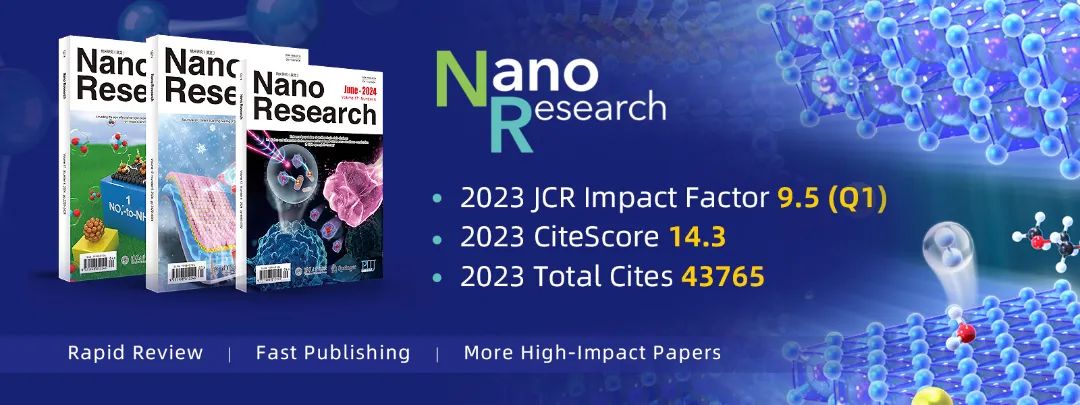
Background Introduction
UV-emitting materials in the ultraviolet spectrum play an irreplaceable role in various fields such as photocatalytic degradation of pollutants, information anti-counterfeiting, medicine, phototherapy, environmental disinfection (water/air purification), and spectral analysis due to their high-energy photon characteristics. To meet the demands of these applications, scientists have developed various types of UV-emitting materials, including colloidal quantum dots, organic small molecules, and polymers. However, existing UV-emitting materials generally face two major bottlenecks: first, the core components rely on toxic metals such as cadmium/lead, rare earth elements, or non-renewable petrochemical raw materials; second, the synthesis processes are complex and accompanied by high energy consumption and pollution emissions, which have serious negative impacts on the environment.
In this context, carbon dots derived from biomass have attracted attention due to their advantages of renewable raw materials (such as fruit residues, agricultural and forestry waste), mild preparation processes, and tunable optical properties. However, the reported luminescence of biomass-derived carbon dots is usually in the visible light region, and there are relatively few carbon dots that emit UV light. Only a small number of studies have successfully obtained efficient UV-emitting systems with wavelengths <400 nm by precisely controlling the carbon core structure or modifying surface functional groups.
Summary of Results
Dr. Henry Opoku, Associate Professor Jia Wang, and Professor Ludvig Edman from the Department of Physics at Umeå University, Sweden reported a UV-emitting carbon dot synthesized using green tea extract Polyphenon 60 as a precursor through a hydrothermal method. The photoluminescence peak of this carbon dot in aqueous solution is located at 384 nm, with a full width at half maximum of 72 nm, and a fluorescence quantum yield of 17%. Additionally, its UV emission is not affected by the excitation wavelength and exhibits a nanoscopic single-exponential fluorescence lifetime (1.74 ns), indicating that its luminescence mechanism originates from a single fluorescent group.
Further studies found that the polarity of the solvent significantly affects the luminescent properties of the UV-emitting carbon dots. When the solvent was changed from water to the more hydrophobic 3-phenoxyanisole at the same solute concentration, the PL peak blue-shifted to 370 nm, while the fluorescence quantum yield significantly increased to 81%. Considering that the carbon dots’ surface is rich in hydrophilic groups, their solubility in hydrophobic solvents is relatively low. The research team analyzed that the fluorescence enhancement phenomenon is mainly attributed to the aggregation-induced emission (AIE) effect.
It is noteworthy that if carbon dots are synthesized directly from unprocessed green tea powder, the resulting carbon dots emit in the blue light region (450 nm) rather than UV. This comparative experiment indicates that reasonable pretreatment of biomass raw materials plays a decisive role in the final optical properties of carbon dots.
Moreover, based on the sustainability of biomass-derived carbon dots, the authors conducted a quantitative analysis of the energy consumption during the synthesis process and explored green renewable substitutes for the chemical reagents involved. Finally, the research team also explored the potential of these UV-emitting carbon dots in cancer treatment. Experiments showed that these carbon dots have selective, efficient, and concentration-dependent inhibitory effects on the proliferation of SH-SY5Y cancer cells, further expanding the application prospects of carbon dots in the biomedical field.
Illustrated Guide
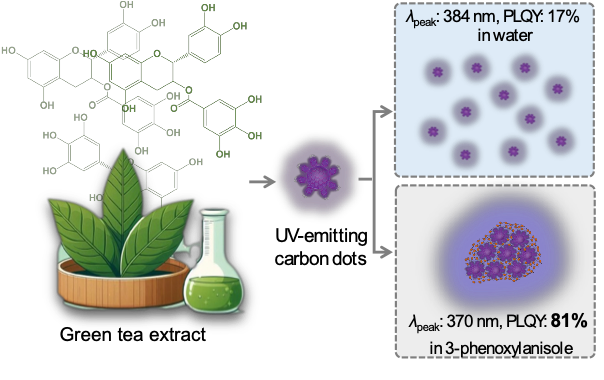
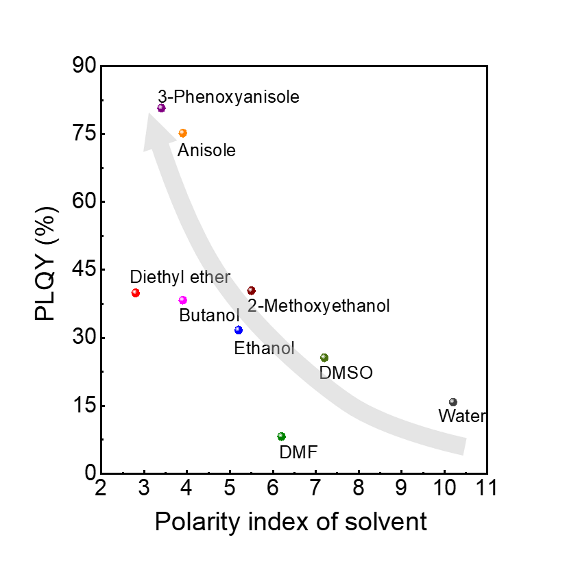
Figure 1As the polarity index of the solvent decreases, the fluorescence quantum yield of the UV-emitting carbon dot solution significantly increases, reaching a maximum fluorescence quantum yield of 81% in the hydrophobic low-polarity solvent 3-phenoxyanisole (polarity parameter = 3.4).
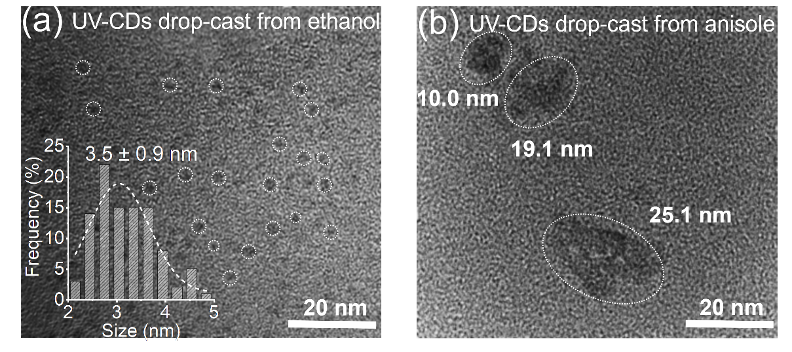
Figure 2Transmission electron microscopy images show significant differences in particle sizes of UV-emitting carbon dots formed in different solvents. In ethanol solution (Figure 2(a)), the average size of the carbon dots is about 3.5 nm, while in anisole solution (Figure 2(b)), the carbon dots form aggregates ranging from 10 to 30 nm.
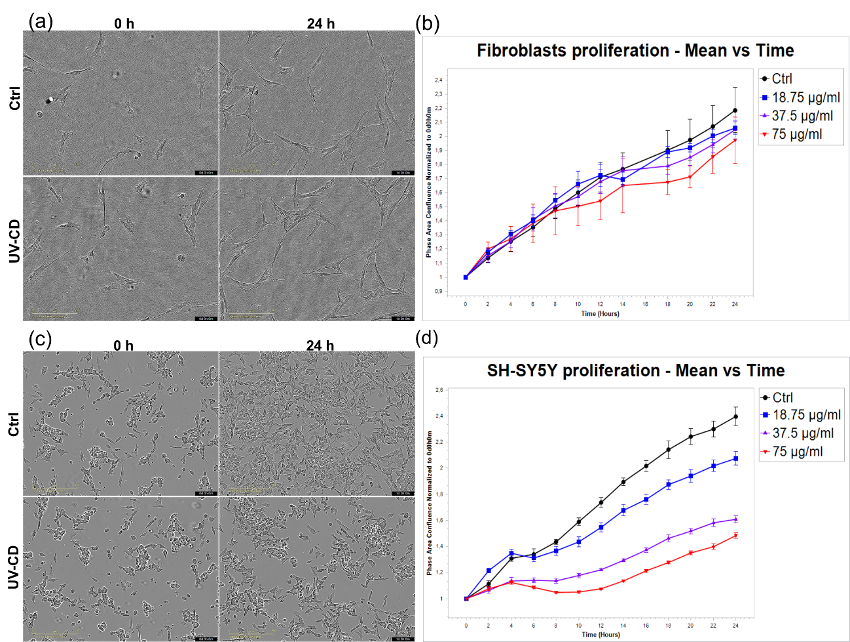
Figure 3The authors evaluated the impact of UV-emitting carbon dots on cell proliferation through real-time continuous monitoring using the Incucyte system. As shown in Figure 3(a), after 24 hours of culture, corneal fibroblasts exhibited similar proliferation capabilities under untreated (control group) and UV-emitting carbon dot treatment conditions, demonstrating the low toxicity and biocompatibility of these carbon dots. Based on this, the authors further tested the inhibitory effects of UV-emitting carbon dots on the proliferation of SH-SY5Y cancer cells, showing significant concentration-dependent inhibition (Figure 3(d)).
Author Introduction
Jia Wang, Associate Professor in the Department of Physics at Umeå University, Sweden, and PI of the Wallenberg Sustainable Materials Science. His research focuses on the synthesis of functional nanomaterials based on biomass and their broad application prospects in various optoelectronic devices, such as organic light-emitting devices, solar cells, and photocatalytic devices.
Ludvig Edman, Professor in the Department of Physics at Umeå University, Sweden, and PI of the Wallenberg Sustainable Materials Science, leads the “Organic Photonics and Electronics Group,” focusing on the development of advanced functional and sustainable materials and devices. Professor Edman holds 10 patents and founded the company LunaLEC. In 2023, he received the ERC Advanced Grant funding.
This article’s collaborators include Dr. Ren Junkai from Xi’an University of Electronic Science and Technology and Professor Dang Dongfeng from Xi’an Jiaotong University.
For more information about Associate Professor Jia Wang and Professor Ludvig Edman and their research group, please visit the research group website opeg-umu.com, or email inquiries to [email protected], [email protected].
Article Information
Opoku H, Ren J, Zhou X, et al. Efficient UV emission from carbon dots derived from a green-tea extract. Nano Research, 2025, 18(4): 94907321. https://doi.org/10.26599/NR.2025.94907321.

Scan the QR code or click the bottom left corner “Read the original text” to access the full text.
Follow us on Bilibili, Video Number, and the official website for more exciting content!

Bilibili

Video Number

Official Website